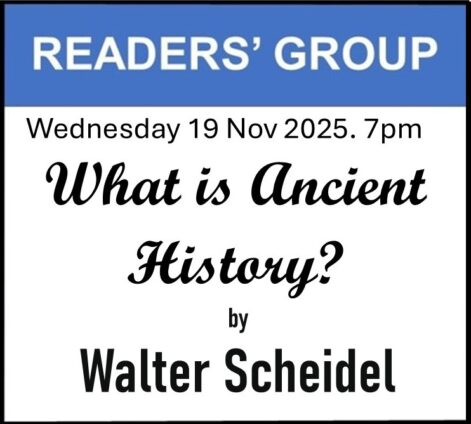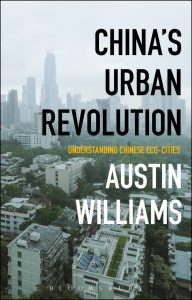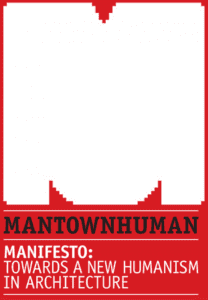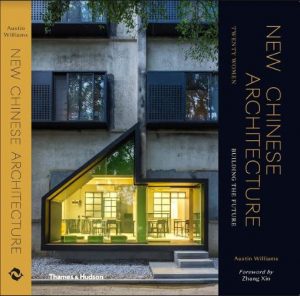ESSAY: False Urban Memory Syndrome
Austin Williams | 13 May 2004
The urban memory debate is one in which aspects of the city (town, or village) – hidden quarters, alleys or buried artefacts – are revived into the modern setting to provide an added dimension to people’s appreciation of the built environment. Not only that but abstractions such as memories, historical events or folklore from a previous generation are captured, reinterpreted and given a role in redefining the sense of what the place was… and is.
Often finding expression in public art and urban signifiers such as plaques, streetsigns, refurbishments or abstract reference to historic objects, the point is to reinstate some memorial of people and places past; to reclaim access to the commons or simply to understand our place in the development of the urban context. The purpose is to hold onto the past – in the same way that our cockles might be warmed by stories told by our grandparents – and to create added colour to the contemporary urban lived experience. Through urban aide-memoires, we can recognise historic events that would otherwise lie uncovered and undisturbed, and through a process of osmosis, we can better understand the urban framework, say the practitioners.
In many Middle England contexts, these memories are often light recollections of historical fripperies: sites touched by figures and events of renown or ancient burial grounds. Conversely, there is a tendency, especially in the Irish context, to reference the darker side of modern historical memory – teasing out the residue of conflict that most people want to, and have often tried to forget.
In the more colourful context of urban memory, celebrity philosopher, Alain de Botton explains how it is meant to work, citing Ruskin’s romantic advocacy of ‘word-painting’ – putting a visual experience into words as an exercise in a conscious appreciation and a contemplative examination of one’s surroundings. Ruskin, he says, ‘recognised that many places strike us as beautiful not on the basis of aesthetic criteria… but on the basis of psychological criteria, because they embody a value or mood of importance to us.”
It is undoubtedly true that we have subjective and objective responses to ‘place’ and both responses may be triggered by a memory of an event that took place in those spaces many years previously. After time, the occurrence may still be sufficiently memorable to conjure the sense of the original physical experience, in the same way that certain isolated smells, tastes and sounds can transport us back to reminiscences of things past. These may engender positive or negative reactions and sometimes even instil in us a physiological responses premised on the original sensory experience. While there may be an element of psychosomatic neurosis about these feelings, it is undoubtedly true that place-memory can have an emotional reality for many of us. Some bitter, some sweet. But a description of the possible mechanics of sensory memory is academic compared to the fact that a search for communality through an isolated, subjective and pyschologised response to material issues has become a significant trajectory in 21st century urban design in the first place.
As far back as the late 19th century urban analyst Walter Benjamin wrote of the tendency for memories to be unpredictable and, above all, unconscious – often sparked off by the most anodyne of stimuli. But is there any merit in attempting to develop a theory of how these individual responses – randomly triggered in the urban environment – can be understood and generalised to society at large.
It’s bit like trying to theorise why some people find some jokes amusing while others don’t. But the main problem with the debate today is that our individualised responses to places and objets trouves are being squeezed into a policy framework which, instead of trying to improve the physical environment in a tangible way, is seeking to generate an intangible urban feelgood factor.
Happy days
Belfast’s Shipyard Memorial Wall, for example depicts the ‘rich heritage’ of the Harland and Wolff site that built the Titanic nearly a century ago. Locals are being encouraged to tie pictures to the wall, of objects that have a personal memory of the site. This act is intended to ‘make a mark’ – to create a sense of place and purpose – on behalf of the community. As it happens, real memory is being manipulated through such vacuous performances, expressed by the fact that hostile, antagonistic or partisan memorabilia – the essence of the shipyard’s (and the city’s) troubled history – are not permitted in this exhibition. It would seem that this is the latest in a long line of urban memorials that air brushes the true ‘rich heritage’ of sectarianism out of the history of the area.
Such is the desire for communality that only ‘correct’ memories will be tolerated, usually resulting in real history being forgotten. Removed from any political context, the result of urban memory practices is often simply the celebration of attachment to place for its own sake. Whereas good urbanists (and there are many) aspire to provide a transformative impact on the public sphere with their projects, urban memory is often simply a tool to create a sense of passive introspection. The shift from urbanism as the challenge of material reality (the way that we think and act on a place to change it and ourselves), to one where urbanism is seen as a critique of the psyche (the way that we think and feel about ourselves in a given space), attests to a broader malaise in modern society.
Frank Furedi argues that today’s world is ‘characterised by the loss of the web of meaning through which people make sense about who they are and where they stand in relation to others.’ As such, the battle to find a renewed clarity of purpose has led to an ‘unprecedented concern with the question of identity…and the politics of recognition.’ It would seem that the current infatuation with the past, with (the pretence of) unity, with cultural identity; with place as an emotional haven, or with therapeutic mechanisms to help us situate ourselves in the world, is summed up in the clamour for urban memory. As a result, there has been a rise in the ‘place-making’ industry, as new theorists attempt to counter the sense of societal alienation by associating the role of ‘places’ with our sense of self.
But the policy of naturalising personal responses to ‘place-memory’ has deposited the ownership of the discussion in the hands of activists, advocates, counsellors, educationalists and politicians, who have turned it into a significant force in designing urban intervention. Nowadays, the search for memory more often than not fulfils a need to create a sense of public engagement – but an engagement with what, is not so clear. There is, it seems, a demand for collective memory at a time when collective reality has disappeared. At present, the UK government is encouraging each town and city to develop a vision for its future which it should do ‘through local strategic partnership… and by consulting everybody with an interest.’ . Consultation is hereby seen as the process of developing an abstract vision – a process which, it believes, has validity in its own terms – rather than a mechanism for engaging with a concrete vision.
This clamour for ‘participation’, ‘engagement’, ‘recognition’, ‘inclusion’, ‘community’ etc, may resonate across the barren landscapes of post-industrial Britain, but is so void of definitional meaning, that it is proposed more for the benefit of the born-again advocates of urban memory theory than for the indigenous populations themselves. For it is true that there is a separation between the two. You never really see a campaign of local residents spontaneously demanding that their urban memory be protected. Conversely, busloads of professionals are regularly brought in to ‘respond’ and ‘give voice to’ local communities’ unspoken desires. Desires which are often unspoken primarily because nobody really knew that they desired what is now being offered in the first place.
For example, ‘Archives and Cultural Memory’ is a programme to ‘keep alive the cultural memory’ of the south-east Asian community in Leicester. It is what the organisers call ‘a living archive.’ Dr Anshuman Mondal of the University of Leicester’s Department of English says that this project is important because ‘the identities of these communities can take shape only if their cultural ‘memories’ are preserved.’
The experience of memory
Communities are – or should be – in a state of flux, rather than preserved in aspic. Indeed it is the historic process of development that gives rise to communities rather than the other way around. ‘When contemporary architects and urbanists use the term ‘community’ they seem to be indicating some ideal of living.’ But unless this is a non-static relationship between community and society, the mere process of prioritising such a thing as ‘community’, or worse still – the ‘idea of community’ – will tend to turn the advocacy for real development on its head. Academic, Sarah Menin asks us to compare, for instance, ‘the care taken in the slow construction of squatter shelters with the banality of vast unarticulated glass facades of some contemporary architecture… that alienate those forced to inhabit these constructed spaces.’ So for her, the creative ‘analytical’ framework of placemaking means that a slum can be a better place than a modern city. To suggest that a Third World country is effectively better off than a First World one, is the logic of undiscerning relativism gone mad, perpetuated by an conflation of beliefs and materiality. Once memory, any memory, is deemed equally valid and of contemporary relevance, then anything goes. As far as I’m concerned, a little bit of critical distance is called for.
Stemming from the heritage industry’s rationale to recreate a sense – not of place, but of experience – urban memory is all about an intuitive relationship to events. The problem with it, and there are many, is that it downgrades a rational and contextualised understanding of place-making history – of actions and consequences – and replaces it with a celebration for the spontaneity of the moment; the natural; the ‘relevant’. After all, using (past) memories as a focus for a future vision can only be a recipe for stagnation in the present.
Reflecting on the rise of new ‘civic’ buildings and grands projets, Katheryne Mitchell says, ”in the attempt to harness nostalgia and foster a sense of collective memory… the development of museums and anchoring institutions… all help to sanitise spaces and provide an image of enjoyable leisure and endless present.’ Be they harbour promenades, science parks, scenic walks or other urban designs intended to engage the public, everything is laid out so that we can be in no doubt that these creations are more than just buildings: they are symbols of regeneration. In this way, real civic history is often demeaned by the celebration of any old snippet of historical memory, which is not even left to be discovered for ourselves, but is revealed, signposted and flaunted in order to give people a clear point of ‘connection’.
Often historical memory, it seems, really needs to be spelled out. The Liverpool Architecture and Design Trust (LADT ), for example, employs a modern-day flaneur to walk around the streets and write place-specific poetry: poetry that identifies ‘signifiers of the past.’ Actually, Andrew Taylor doesn’t have the liberation of the flaneur, instead his employment is a contrivance. ‘My walks are actually quite predetermined. I’m told by LADT to go to a certain point and walk back to the city centre, but within that I can go any way I want.’
No longer are we expected or needed to have had a direct personal experience at a place. Taylor’s contrived walks around the city are requested by the councillors and done on Liverpudlian’s behalf. Locals can then read about them at leisure. The collective memory industry, it seems, is keen to recommend that we partake of the experiences of the city even if we can’t get there ourselves.
The dangers in reinforcing this rather sad, passive and somewhat pathetic sense of what place means to us is plain to some of us who are over a ‘certain age’ and who have tried to retain a sense of our own historical memory combined with a critical faculty. Even hippies in the 1960s who were often accurately portrayed as navel-gazing loafers who luxuriated in wondering ‘who’ and ‘what’ they were, still, at least, managed to venture out to explore the wider world and their place in it. Nowadays, the official response is to encourage us to reflect on the interesting features of our own locality – to find ourselves in our own backyard. Urban memory is the celebration of the parochial. Imagine, as the advocates might say, the stories, the wonder, the history that might be revealed by a thorough appreciation of the things that you might find down the back of the sofa.
Localism and personal introspection is constantly reinforced through books such as De Botton’s which pontificate on the nature of the ordinary. (Personally, I think that we should be aspiring to the extraordinary.) Surely we have lost our sense of direction – lost a sense of purposefulness – when passive contemplation, instead of active intervention, is posited as a way of engaging with the world. And it seems to me that we need to be turning outwards and understanding the world and shaping the future, not contenting ourselves with our locality, our past or our sub-conscious.
Psychological introspection is bad enough but is not always as mundane as it sounds. As we have seen, often the drive to create a sense of communal experience means that the urban memory industry is content to utilise ugly, tragic or painful memories to serve their higher purpose. ‘Peoples’ collections’ which gratuitously preserve the symbols of war – but remove them from any analytical framework of historical or critical understanding – are celebrated as a means of generating a sense of a forward-thinking community. A fatuous and dangerous way to go about it.
By raising people’s buried urban memory in this way, rather like raising the Titanic, everything and nothing becomes sacred. Bearing one’s soul ceases to be voluntary and people relate through quack psychology and individual aversion therapy. Locals are encouraged to rediscover community memories through confrontation with the skeletons hidden in their closets. But sometimes, what lies down the back of the sofa deserves to remain there.






